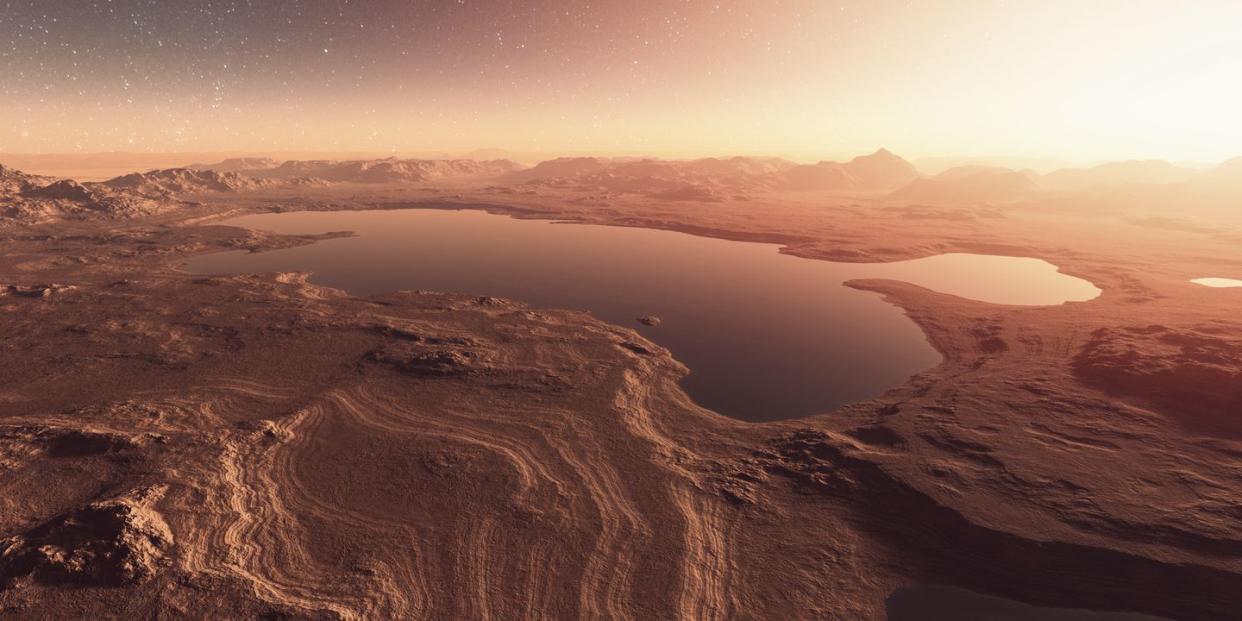Water May Have Flowed Across Mars Shockingly Not That Long Ago

China’s Zuhrong rover may have discovered evidence that water may have flowed much more recently across dry regions of Mars than we thought.
Through evidence in the form of cracks and crusts in sand dunes, researchers have identified evidence of salty flowing water as recently as 400,000 to 1.4 million years ago.
While this is not the most recent evidence of liquid water on Mars (it’s been found at the poles in the present day) it is the most recent evidence in an area much more conducive to life.
When the first humans walked the Earth, there might have been liquid water on the surface of Mars. The water that was believed to have dried up billions of years ago could have actually trickled through certain areas of the red planet between a few hundred thousand to just over a million years ago.
This is not the most recent evidence of liquid water on the planet. Some studies have suggested that there is liquid water underground near the southern pole today. Other findings have suggested the current presence of intermittent liquid water on the surface—though those findings have been called into question, as there are other potential, non-water explanations for those features. And either way, we’re not talking about drinking water. The water on Mars is packed full of salts called perchlorates that allow it to remain liquid at very low temperatures.
Nonetheless, this discovery is still significant—and exciting. The keyword here is "surface." If this new information is accurate, it would be the first evidence, without alternative explanations, that liquid water was not restricted to the poles in the relatively recent past. Instead, it would suggest that liquid water was more widespread across the planet and reached lower latitudes than previously expected.
This potential breakthrough comes from a research paper utilizing data from China's Zhurong rover. Although Zhurong has been dormant since May 2022, it can still transmit information to Earth. The rover's data revealed that liquid water might have existed in the sand dunes of a region known as the Utopia Planitia Plain, situated in the northern half of Mars. The research team identified features such as cracks, ridges, and a crust, which they believe were formed by the evaporation of highly saline water. They ruled out other potential causes such as wind and carbon dioxide frost.
“According to the measured meteorological data by Zhurong and other Mars rovers, we inferred that these dune surface characteristics were related to the involvement of liquid saline water formed by the subsequent melting of frost/snow falling on the salt-containing dune surfaces when cooling occurs,” Qin Xiaoguang, a researcher from the Institute of Geology and Geophysics (IGG) of the Chinese Academy of Sciences (CAS) and head of the study, said in a press release.
However, it's worth noting that these dunes are only estimated to be between 400,000 and 1.4 million years old. Therefore, if liquid water indeed formed these features, it must have existed in the region during that time frame. This suggests that liquid water flowed across the Martian surface more recently than previously believed, as the Utopia Planitia Plain was previously thought to be able to sustain only solid or gaseous water.
“This is important for understanding the evolutionary history of the Martian climate, looking for a habitable environment, and providing key clues for the future search for life,” Xiaoguang said in a news release.
As the search for life on Mars continues and preparations for human missions progress, understanding the presence of water remains crucial. If water was indeed found at lower latitudes as indicated by this study, it has implications for identifying potential habitats where life could have thrived. Areas closer to the equator would have been more favorable in terms of temperature than polar regions.
Hopefully, in the future, more observations will follow to confirm this finding. But at the moment, it’s exciting to think about the possibility that the existence of humans on Earth and flowing water in various regions of Mars may have overlapped. Maybe someday, through impressive feats of terraforming, they will again.
You Might Also Like
